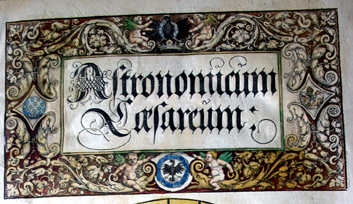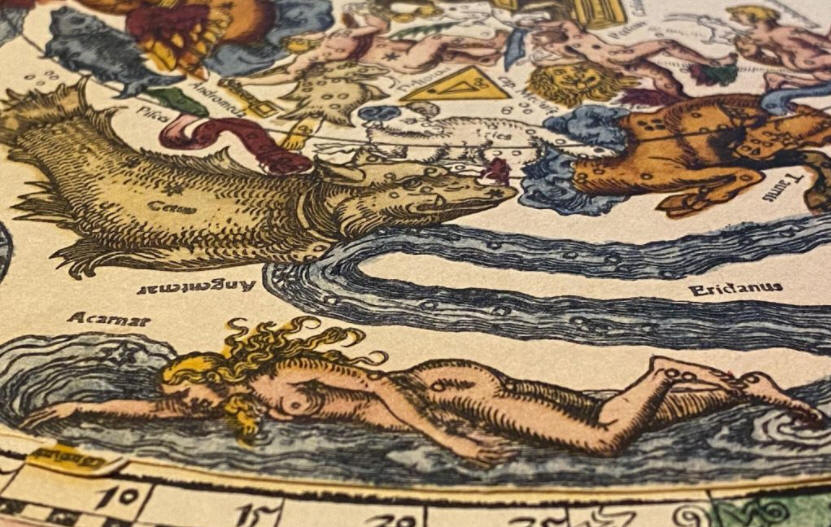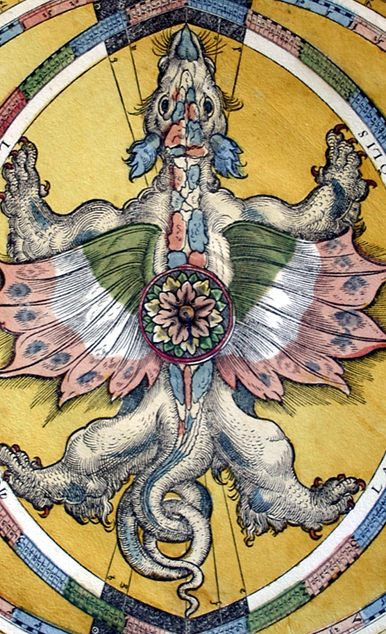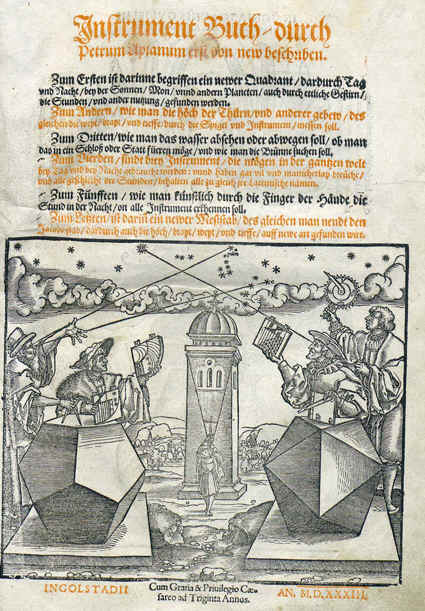|
Petrus Apianus
Astronomicum Caesareum
INTRODUZIONE
di
Research Professor of Astronomy and History of Science Harvard-Smithsonian Center for Astrophysics
[PETRUS
APIANUS] Astronomicum
Caesareum [Ingolstadt,
1540] ROSENWALD
COLLECTION 678
The ďEmperorís AstronomyĒ from the private press of Petrus Apianus
is one of
the great masterpieces of sixteenth-century printing. In this
large folio volume the paper instrument found its supreme realisation in a
series of intricate volvelles, all hand-colored in the astronomerís
Ingolstadt printing shop. Before
writing and crafting the Astronomicum
Caesareum, Apianus had pioneered in publishing books filled with
ingenious movable devices, the so-called volvelles. Half a dozen of his
works were produced at his own press in the university town of Ingolstadt,
where he was professor of astronomy. Production of the magnum opus must
have taken the astronomer several years, for between 1534 and 1540 he
published few other books. The great volume grew and changed in the course
of the printing, eventually comprising fifty-five leaves, of which
twenty-one contain moving parts and twelve more have index threads. Among
its variety of pages with moving parts comes first and foremost a set of
planetary equatoria, paper wheels for finding the places of the planets
within the zodiac. Folios [B3] to FIII contain these devices. Embodying
all the details of the geocentric Ptolemaic system, the volvelles and
threaded charts provide a remarkably accurate graphical calculation of a
planetís position. The single most impressive page is folio [E4], the
mechanism for the longitude of Mercury, which contains nine printed parts
plus a complex hidden infrastructure to allow movement around four
separate axes. Rivaling this page in spectacular effect is the opening
GIIIv-[G4] with a double cluster of lunar volvelles facing each other. Apianus
did not originally plan to have the two sets of lunar volvelles facing
each other; at the back of the Rosenwald copy are cancel leaves for folios
GII an GIII according to an earlier conception for this section of the
book. There also must have been other revisions in the design. For example,
the moving parts on folio [G5] conceal an entirely irrelevant base of an
astrolabe, the fossil of a plan that was undoubtedly abandoned when
Apianus realized how hard it would be to cut out all the lacelike paper
structure required for its movable star chart. Throughout
the initial part of his book, Apianus gives detailed instructions for the
operation of the volvelles, using as his examples the birth dates of the
Holy Roman Emperor Charles V and his
brother Ferdinand I, the dedicatees. In the chapters immediately following,
Apianus shows how to calculate eclipses, and in particular the partial
lunar eclipse of 15 November The
second part of the Astronomicum Caesareum deals primarily with observational problems
and their graphical solutions. Although moving parts have not been
included in its design, this section is not without interest, because it
depicts for the first time the fact that comet tails point away from the
sun. Among the five comets observed by Apianus in the 1530s and described
here is the one now known as Halleyís Comet. The
final page of the Rosenwald copy contains Apianusís original coat of arm.
As a result of this magnificent volume, Emperor Charles V granted the
professor a new coat of arms (Apianus printed a replacement page, which is
found in some of the copies). The emperor also bestowed some more unusual
rewards on the astronomer for this typographic tour de force: the right to
appoint poets laureate and to pronounce as legitimate children born out of
wedlock. The
twentieth century has given its own characteristic honor to Apianusís
effort: in
Ringrazio il Professor Owen Gingerich per aver acconsentito a pubblicare la scheda che presenta la copia dell'Astronomicum Caesareum appartenente alla Library of Congress, Washington, Rosenwald Collection 678.
Per approfondire
https://www.youtube.com/watch?v=b6entG-BXcQ&t=11s&ab_channel=BasGriffioen
di FELICE STOPPA
|
Riproduciamo di seguito l'intera opera depositata presso la Biblioteca Nazionale Braidense di Milano ( AB XVIII 38) con il consenso della Biblioteca e su concessione del Ministero per i Beni Culturali e Ambientali con l'espresso divieto di ulteriore riproduzione o duplicazione con qualsiasi mezzo
La tavola a volvelle delle 48 costellazioni La tavola sottostante alla volvella delle costellazioni Particolari delle scale graduate e delle tacche utilizzate nella tavola delle costellazioni Capilettera e strumenti per l'osservazione ed il calcolo astronomico ed astrologico
Esamina la copia del Deutsches Museum, MŁnchen
e l'altra opera del 1533 Instrument Buch Apianus Jnstrument Buch[1].pdf
Petrus Apianus Horoscopion Apiani GeneraleÖ, Ingolstadt 1533
Sulla vita e la produzione dell'autore consulta la voce di
Sopra l'origine delle costellazioni australi leggi il seguente articolo di
Confronta con Anonimo Copia manoscritta de Imagines Syderum Coelestium di Peter Apian, secolo sedicesimo? http://www.atlascoelestis.com/Anonim.%20Apiano%20sedicesimo%20base.htm
|




